While your engine's crankshaft drives both belts, the timing belt and the serpentine belt are not the
same thing and serve very different functions in your vehicle.
The serpentine belt drives the vehicle's accessories like the AC, alternator, and power steering pump. In contrast,
the timing belt connects the camshaft(s) to the crankshaft to synchronize the engine valves and the pistons.
Both timing belts and serpentine belts are critical to the proper operation of a vehicle's engine.
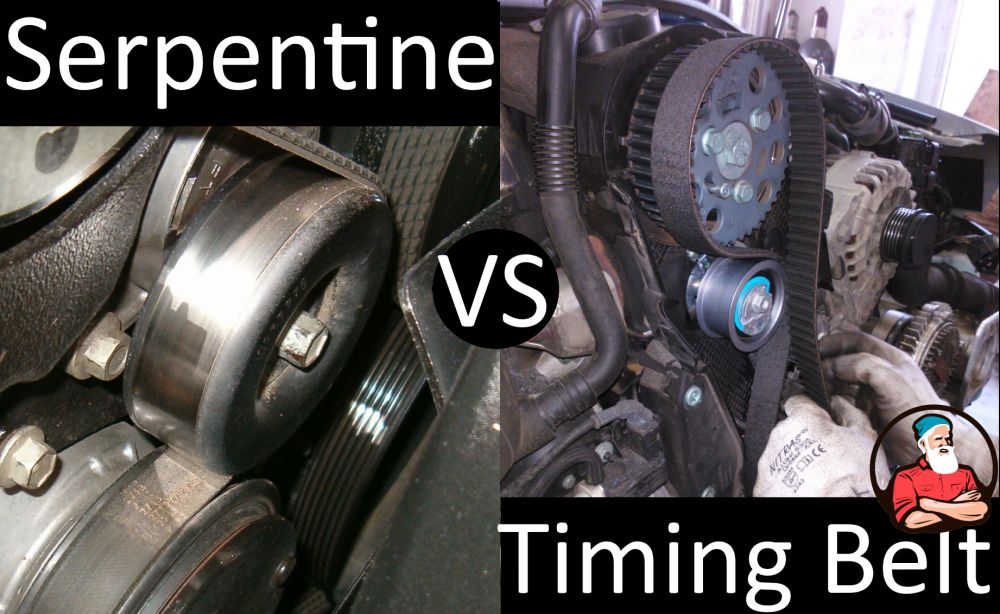 Serpentine Vs Timing Belt
Serpentine Vs Timing Belt
Overview: Timing Belt Vs. Serpentine Belt
|
Timing Belt |
Serpentine Belt |
| Main Purpose |
Synchronizes timing between pistons and valves
| Drives engine accessories such as AC, alternator, cooling fan etc. |
| Location |
Hard to get at - underneath timing cover
| Externally outside engine |
| Construction |
Stiff rubber with gears
| V-belt made of stretchy rubber |
| In Case Of Failure |
Motor won't run - possible catastrophic damage due to valve
interference
| Motor will run a short time - possible catastrophic damage due to engine
overheating |
| Failure Prevention |
Replace every 5 to 7 years or 60,000 to 100,000 miles (check owners
manual)
| Replace every 7 to 9 years or 90,000 miles (check owners manual) |
| Replacement Costs |
Parts: $25 to $200, Labor: $500 to $1300
| Parts: $15 to $30, Labor: $40 to $80 |
| Can You Replace It Yourself (As A Novice) |
Yes but difficult with many tools |
Yes, easily with few tools
|
Timing Belt vs Serpentine Belt: Purpose
What Does A Serpentine Belt Do?
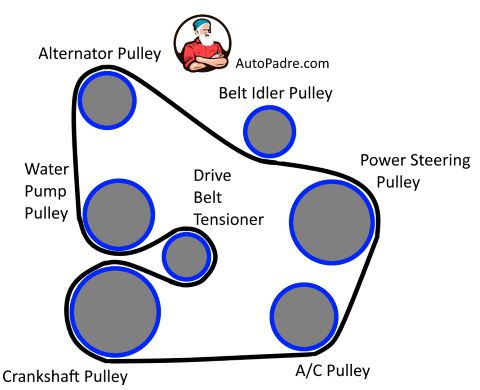 Serpentine Belt Diagram
Serpentine Belt Diagram
The serpentine belt is a rubber belt that drives the engine accessories (parts external to the engine) of the
vehicle. These include the following:
- alternator
- power steering pump
- AC compressor
- water pump (sometimes)
- acts as a fan belt for the cooling fan (sometimes)
- auxiliary air pump (sometimes)
What Do Timing Belts Do?
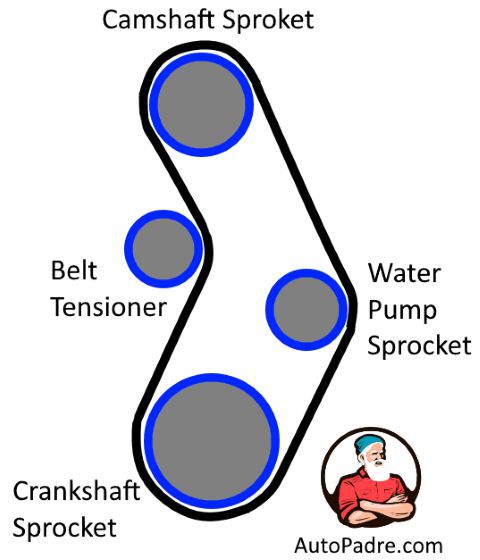 Timing Belt Diagram
Timing Belt Diagram
The timing belt gets its name because its primary function is to maintain the exact timing of the engine's valves in
the engine's combustion chamber.
Timing belts accomplish this function by driving the car's internal components. These include the following:
- camshaft(s)
- water pump (sometimes)
- oil pump (sometimes)
- injector pump (sometimes in diesel applications)
Read our in-depth post on timing belts here.
Timing Belt vs Serpentine Belt: Location
Where Is The Serpentine Belt Located?
The serpentine belt gets its name from how it is woven around the various pulleys of the car's accessories, much like
a serpent or a snake.
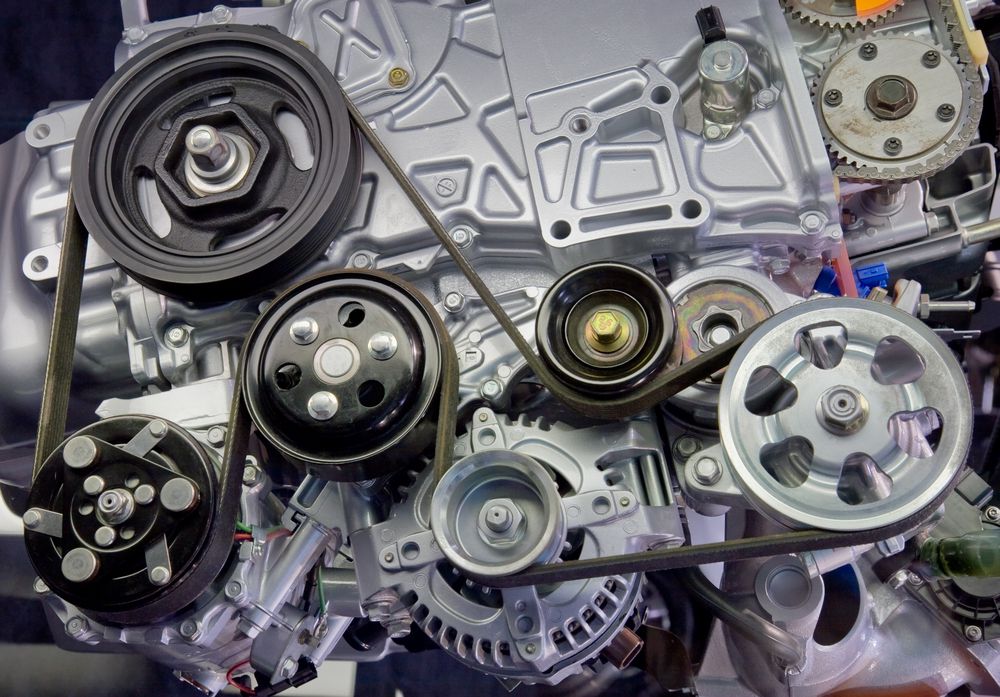 Serpentine belt location
Serpentine belt location
Your vehicle's serpentine belt is located outside of the engine and, in most cases, can be accessed and inspected
quickly and easily.
Where Are Timing Belts Located?
Timing belts are located under the timing cover and are challenging to access.
Depending on your vehicle's engine configuration, you must remove the alternator, a wheel, the fan, or an engine
mount to access the timing belt and service it properly.
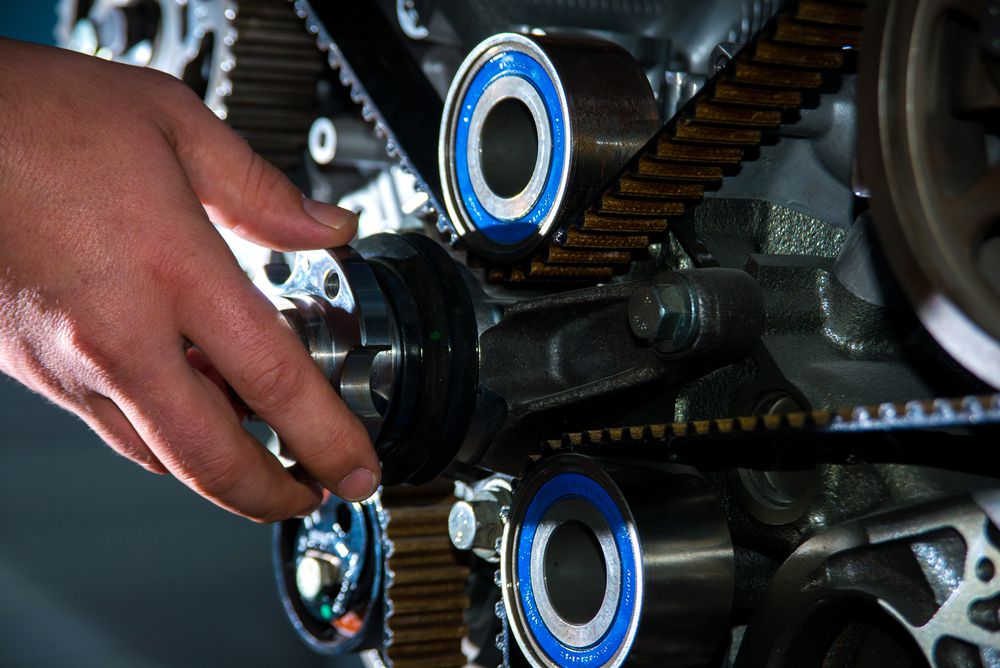 Timing belt location
Timing belt location
You can usually inspect a timing belt through the inspection port in the timing cover; it is sometimes difficult to
gauge its condition.
Serpentine Belt vs Timing Belt: Construction
What Are Serpentine Belts Made Of?
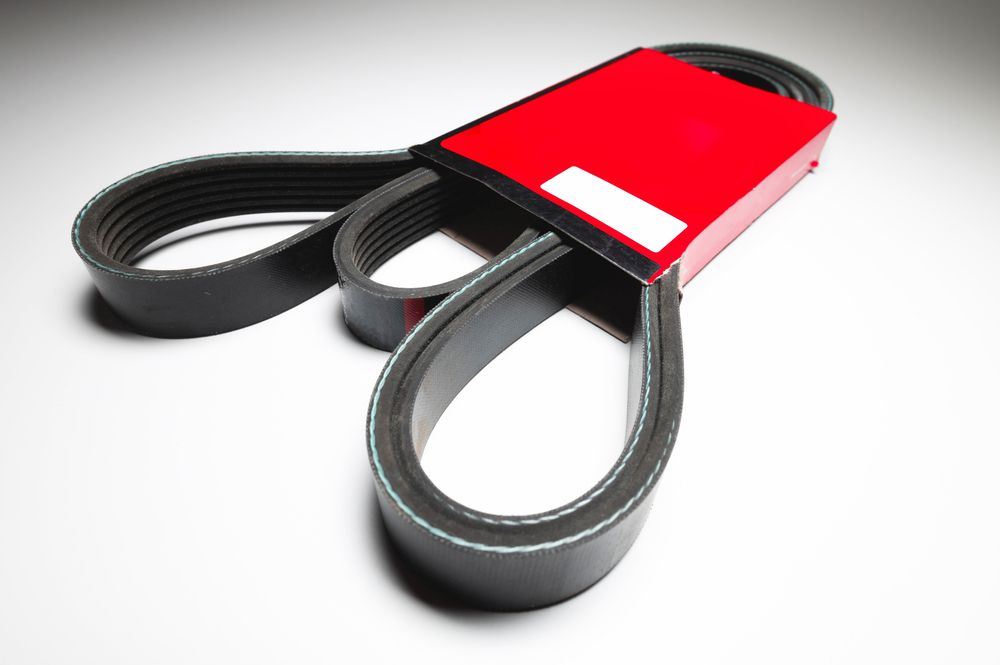 Serpentine Belt
Serpentine Belt
A serpentine belt is a friction drive belt, so it is made of a rubber compound that stretches around the accessory
pulleys and drives them purely by friction.
The serpentine belt is a V-belt with grooves cut into it longitudinally that match up with grooves in the pulleys.
These grooves create a greater surface area for contact.
Unlike the timing belt, some slippage by the serpentine belt can occur, although it will squeal or whine if the belt
is worn out or loose.
What Are Timing Belts Made Of?
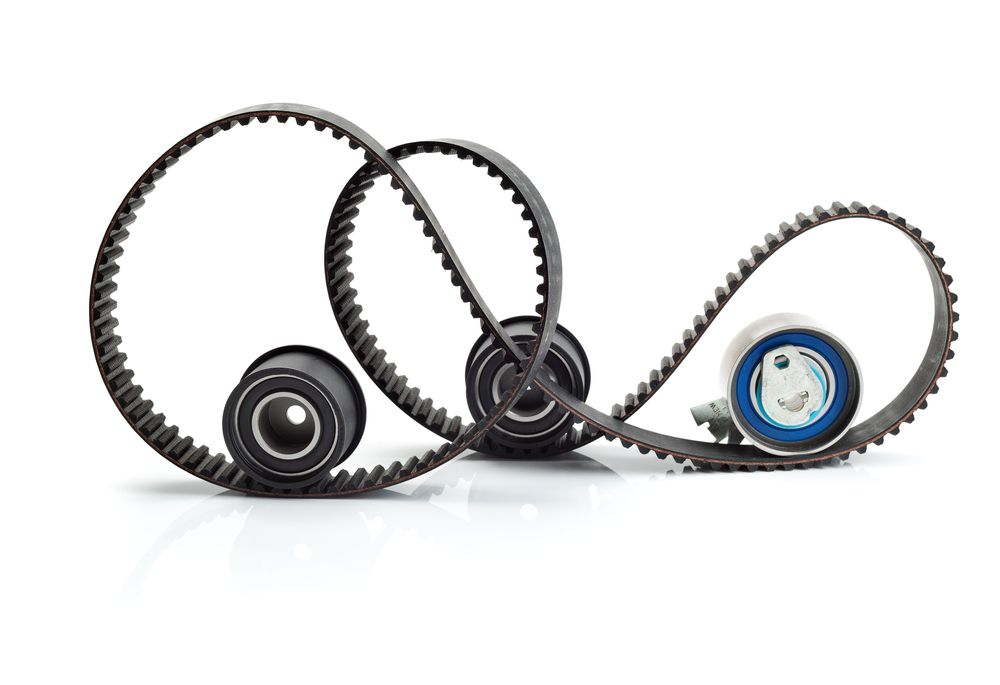 Timing Belt
Timing Belt
The timing belt is a direct drive belt with cogs, aka gears, built into the belt that matches up with the gears of
the crankshaft pulley and the camshaft pulley.
It is constructed stiffer than the serpentine belt and is made not to stretch and withstand extreme heat and, to some
degree, possible oil or coolant contamination.
Serpentine Belt vs Timing Belt: Failure
What Happens If A Serpentine Belt Breaks
If you suspect a failing serpentine belt, you must book an appointment to have it looked at by a mechanic or replace
the belt yourself if you are capable.
If a serpentine belt failure occurs, the car's accessories will no longer work.
First off, your car's alternator will no longer charge your vehicle's battery, and the battery will quickly drain.
A car's battery drains extremely fast, and you probably won't get further than a couple of blocks before your car
dies and won't start.
The car will also lose power steering, making it extremely difficult to steer.
The serpentine belt may also drive your water pump or your car's cooling fan.
If either of these isn't functioning correctly, your car will quickly overheat, which again could be catastrophic and
costly with a complex repair required with an expensive charge for both parts and labor.
What Happens If A Timing Belt Breaks
You should safely park your vehicle and shut your engine off immediately if you suspect a failing timing belt.
If timing belt failure occurs, the engine's pistons won't be properly synchronized with the engine's intake and
exhaust valves.
Timing belt failure could be either a slipping belt or if a belt breaks completely.
This could allow internal contact between the pistons and valves, depending on whether your vehicle has an
interference or non-interference engine.
When timing belts are damaged, they are susceptible to breaking
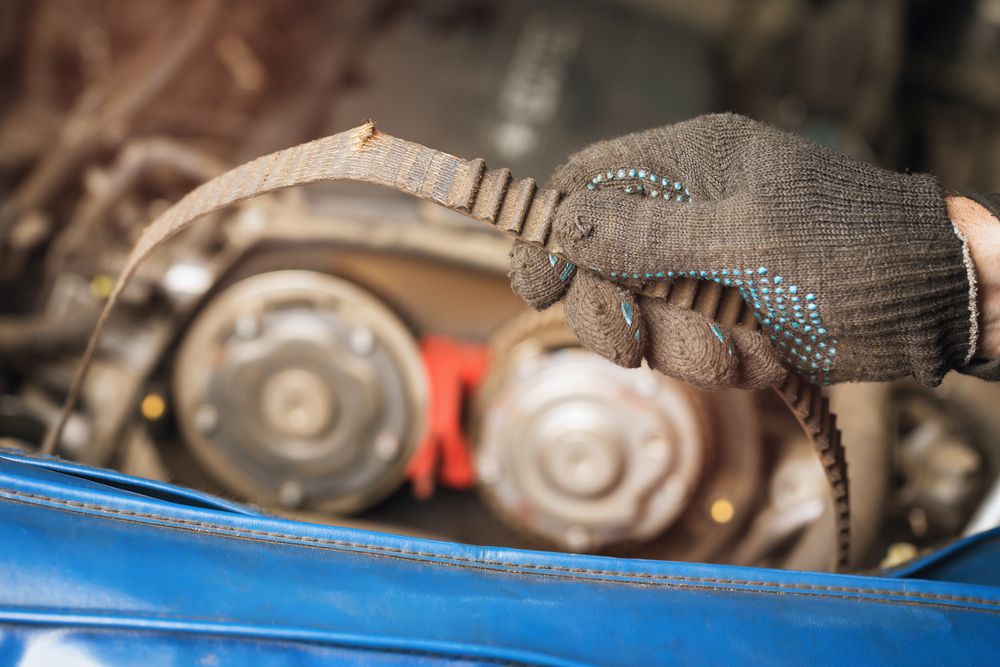 Timing Belt damaged and near breaking
Timing Belt damaged and near breaking
If contact occurs, costly repairs will be needed with an expensive bill for parts and labor.
Timing chains are often preferred over timing belts because it can be somewhat challenging to know if you have a bad
timing belt.
Failure Prevention
Due to the critical nature of both the serpentine belt and the timing belt, you must follow your vehicle's
recommended preventative maintenance schedule to save you much future money and headaches.
Replacement Costs
There is a drastic difference between the cost of replacing a serpentine belt versus a timing belt.
Both the timing belt and serpentine belt have recommended replacement intervals.
The make and model of the vehicle determines the timing belt replacement cost. Click to see our timing belt replacement cost analysis on different makes and models.
Replacement Costs For A Serpentine Belt
The belt replacement interval for a serpentine belt is generally between whichever comes first, 7 to 9 years or
90,000 miles. But, again, check with your mechanic or owner's manual for the interval for your specific vehicle.
Replacing a serpentine belt is usually a straightforward process.
A capable mechanic can complete the job quickly, and the belt is inexpensive.
Due to low labor and parts costs, most serpentine belt changes come out to not more than 100 dollars.
Replacement Costs For A Timing Belt
The replacement interval for a timing belt is generally between whichever comes first, 5 to 7 years, or between
60,000 to 105,000 miles. Again, check with your mechanic or owner's manual for the interval for your specific vehicle.
Replacing a timing belt is quite costly, mainly because it is labor-intensive.
Most timing belt jobs take over 5 hours to complete.
The timing belt is not very expensive, usually only around 50 dollars. Still, because it takes a lot of labor time to
remove the components necessary to change the belt, it is highly recommended to change out other parts made accessible
while you're at it.
These include the following:
- water pump
- timing belt tensioner pulley
- idler pulley
- related gaskets and seals
Generally, the timing belt is available in a timing belt kit that includes the belt and the water pump, pulleys,
gaskets, etc., for around 100 to 300 dollars.
Add in labor time, and timing belt jobs can cost between $800 to 1500 dollars for parts and labor at a shop.
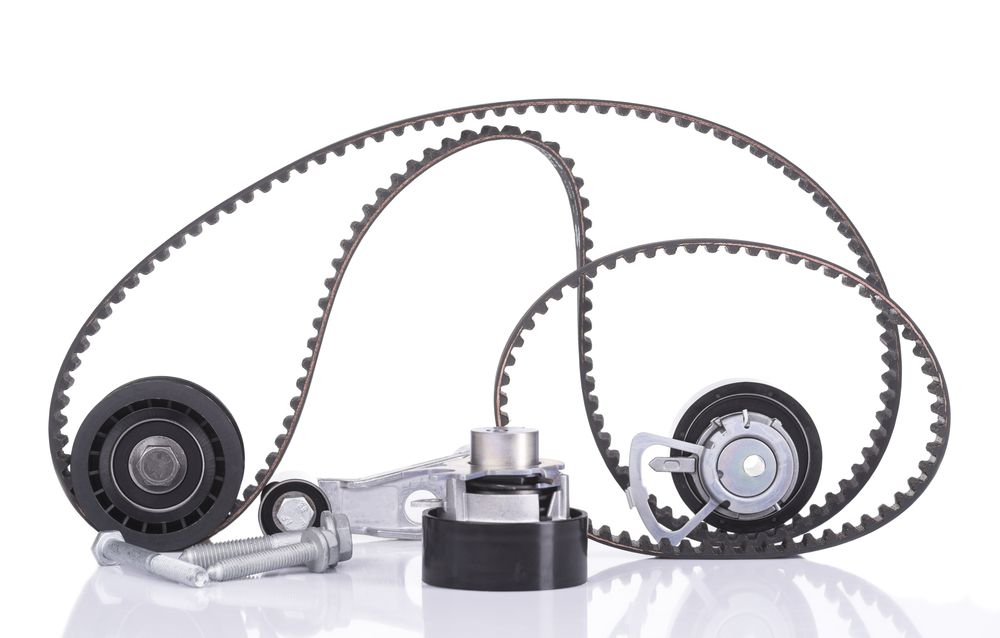 Timing Belt Kit
Timing Belt Kit
There is a huge difference in difficulty between changing a serpentine belt and a timing belt, although neither
requires you to take your vehicle to a mechanic.
Can I Change A Serpentine Belt Myself?
Even for a novice, a serpentine belt change is relatively easy on most vehicles.
The proper tools required for the job are common and inexpensive, and the vehicle won't need to be put on jacks.
There are videos available on Youtube on almost every make and model of vehicle.
That said, a bad serpentine belt should be dealt with immediately, so if you can't or don't have time, you should
have the serpentine belt replaced by a mechanic.
Can I Change A Timing Belt Myself?
A timing belt is quite complex and requires tools, such as a timing belt pulley puller, that most novice mechanics do
not have.
The job will take much longer for a beginner than it will for an experienced mechanic, and there is the possibility
that the installation will be done improperly, which could lead to engine damage.
A timing belt change is possible even for a beginner if proper procedures are followed.
It's best to give yourself a few days so that parts or tools can be bought if you find you need them.
As with serpentine belt changes, there are timing belt change videos available on Youtube for virtually all makes and
models of vehicles.
In Conclusion
Timing belts and serpentine belts are not the same and serve different but critical purposes.
If you're unsure or think either belt needs to be changed, it is essential to consult a mechanic as failures can lead
to engine damage.
If you're unsure if your vehicle has a timing belt or a timing chain, look for your model at the timing belt
resources at this link.